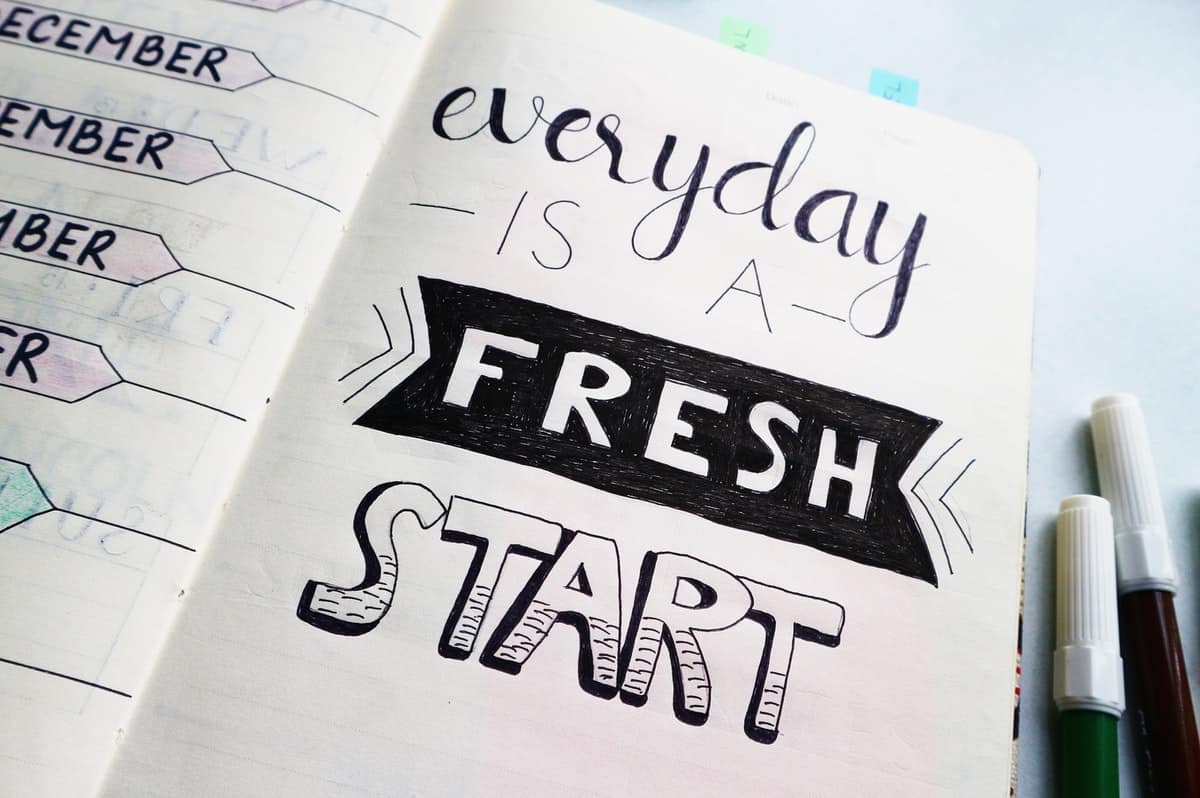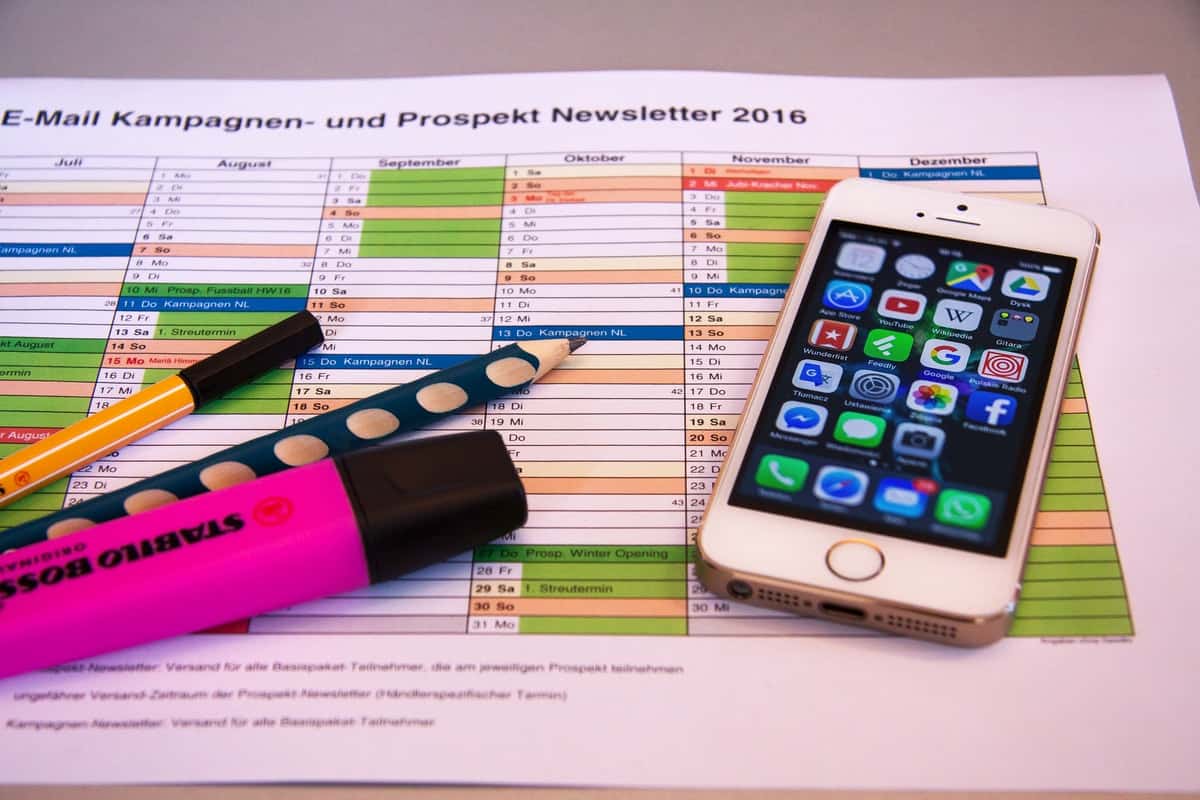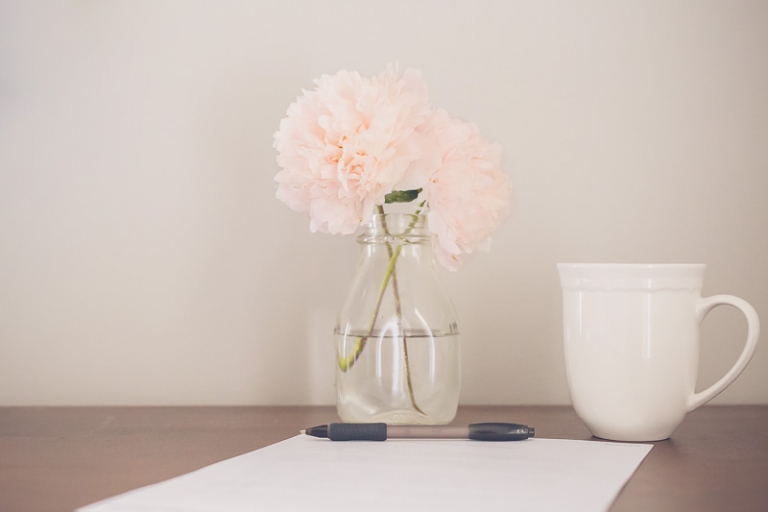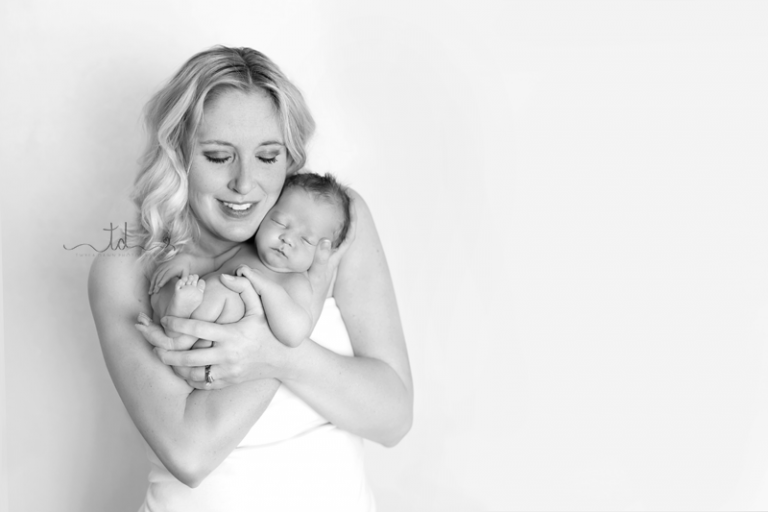Get ready for the coming decade with these ideas on planners for photographers!
I scheduled two clients for the same mini-session spot. They both showed up, families in tow, ready to go. But I’d messed up big time. That mortifying moment (and a few near misses) is why I’m such a nerd when it comes to finding the best planners for photographers.
Double-booking, forgetting a session, forgetting tasks…all of these things can make you feel foolish, rattle your confidence and worse yet, cost you clients and money. Using a planner consistently helps avoid those mistakes. It can also save you time and keep your tasks, goals, and dreams close at hand. If you’re planning to kick off 2020 with a new organizer, we’ve got a list of the best planners for photographers written just for you!
 What’s the best planner for photographers?
What’s the best planner for photographers?
Spoiler alert…I’m not going to tell you. That’s for you to decide. There is no one single planner on the market that will fit the needs of every single photographer. Rather, it’s more a matter of finding the right planner for you. It doesn’t matter if everyone in your photography club is raving about one brand…it needs to have the features YOU need and be handy enough that you’ll actually use it!
This list isn’t comprehensive. There are hundreds of choices available, so if your favorite planner isn’t listed, drop it in the comments below and share why you love it. Maybe you’ll help another photog find their planner BFF. And I haven’t included the variety of simple planners available, or talked about bullet journaling as a planning method. That’s a whole other topic entirely.
What I will do is break down some of the top options on the market. As I said, I’m an organizational nerd. I love testing new planners, and I’ve used several over the years. I’ve also collected the opinions of friends and family using other brands. I’ll give you all our opinions as we discuss paper planners, digital planners and a hybrid option.
What’s inside your planner?
Before you start browsing for the best planner for photographers, take a few minutes to figure out what components you’ll want. Options include:
- Calendar (monthly, weekly, daily or some combination of the three)
- To-Do Lists
- Address book
- Information pages
- Project management pages
- Blog planning pages
- Social media planning pages
- Password tracking
- Goal setting pages
- Family tracking pages (your life isn’t one-tracked, your planner doesn’t have to be either)
- Blank or lined pages for brainstorming, notes, etc.
- Pockets
- Ability to insert other items or pages
- Paper or digital
- A zipper, tab or some other way to close it
- Ability to customize it with your name or brand colors
You also want to have an idea of what size pages you’d like and even the thickness of your planner. The more pages you add, the heavier it becomes.
It’s important to choose a planner that meets your needs and that you will USE. I can’t stress this enough. It can look fabulous, but if you aren’t actually pulling the thing out and using it, you’ll have wasted your money. You’ll only get back the time and effort you put into your organization.
The advantages of paper-based planners for photographers
Despite working in a largely digital world, there is still a huge variety of available paper planners. Planners used to be strictly for academic or business types. Now, savvy companies are catering to a wide variety of people (mostly women). According to a Seattle Times February 2019 article, sales of paper planner books and organized topped $386 million in 2018, and planner accessories rose to $3.9 million. Apparently photographers aren’t the only ones trying to get their proverbial ducks in a row.
So there are more choices than ever when it comes to planners for photographers, along with moms, social media influencers, attorneys, teachers, etc. Planners range in price from about $12 for a basic monthly/weekly calendar to $100 or more for customized options.
I rely on paper planning systems. I like having a tangible product where I can put pen to paper. It’s easier for me to “see” and understand my schedule in paper form. I also like listing and brainstorming on paper. My planner is stored with all my tax info each year when I’m done with it, for quick and easy reference. I like that I can switch brands or sizes, but all that information is still available from year to year.
Paper planner #1 – The Happy Planner
If you’re a Michael’s patron (or another hobby/craft store), you’ve seen the Happy Planner. These planners come in 3 different sizes. Choose from a vertical or horizontal layout. Each planner has a plastic cover (a heavy laminated paper cover) that isn’t flimsy but isn’t really rigid either. The planner is held together by a coil of 7 plastic rings. The Happy Planner makes a teacher’s edition, but most are generic in nature. There’s a huge variety of covers and color schemes available as well as accessories.
If you want a planner you can dress up with stickers to be super creative AND organized, this is the planner for you!
Pros:
- Built-in tabs for easy access of different sections
- Lots of fun colors and designs available
- Coordinating accessories like stickers and dividers are fun.
- Pages can snap in and out for even more customization.
- A custom hole punch (sold separately) lets you add anything you want to your planner
- The basic planners start at less than $20
- Available in lots of retail stores
Cons:
- Most of the designs are geared toward women.
- Once pages are removed, they don’t retain their shape as well when reinserted. My corners were bent and the pages I removed then reinserted fit more loosely on the coil.
- No custom expansion packs available for business or photographer needs
- No way to hold the planner closed
- The laminated cover
- The cost of accessories and expansion packs can add to the cost quickly (wait for a sale or use a coupon to help keep the cost low)
Paper Planner #2 – Plum Paper Planners
Plum Paper planners are custom made for each individual customer. You design your planner online and the company ships it straight to your door. Like the Happy Planner, these come in three different sizes. They have a hard plastic cover and are bound with an attractive aluminum coil. Each planner comes with standard calendar options and vertical or horizontal layouts are available.
One of the coolest features of the Plum Paper planner is the ability to customize it to your specifications. You can choose the cover color and put your name or business name and the year on it. You can also customize the insides by adding names to your calendar section. So you could have an area of your calendar dedicated to your business and personal tasks, a section for each child, or a section devoted to the different aspects of your business.
Plum Paper offers some really great expansion packs that they’ll build into your planner for you. Choose from things like social media, photography, blogs or sales. The photographer pack, for example, features pages for vendors, location scouting, year-at-a-glance, session details, mileage, and expenses. These planners start at around $35 but the cost adds up when you start customizing them!
If you want a beautiful, completely personal planner, give the Plum Paper planner a look.
Pros:
- Waterproof, spillproof cover
- Lots of color, size and
- Tons of customization options inside and out
- High-quality paper inside lets pens glide over the surface and little bleed through
- Helpful business-related add-ons
- Ability to order non-bound pages if you want your own notebook
- Ability to order a planner with any start month. No need to wait for a new year to get organized!
Cons:
- Most of the colors, covers, and accessories have a distinctly feminine feel.
- One of the more expensive planners for photographers. Costs can quickly add up to $80 or more if you want lots of customizations
- Because you can’t remove and reinsert pages, what you order is what you’ll have in your planner all year. Adding sections adds to the thickness and weight of your planner. I added so many pages, my planner became heavy and cumbersome so I stopped using it…which is so not the point of having an expensive planner.
- Fewer accessories are available. There are no pockets or folders that you can buy to snap into the planner and no way to hold it all closed.
- Everything must be ordered online and is non-returnable. If you order it, you’re stuck with it!
- Large spiral coil can be hard to write around.
Paper Planner #3 – Erin Condren Life Planner
The Erin Condren Life Planner is another planner that you order online. These planners are 7×9” and come bound with an aluminum coil (silver by default, but you can custom order other colors for a price). The planners feature a plastic cover and beautifully designed interior pages on a nice heavyweight paper. These planners have gotten a lot of attention in magazines like Good House Keeping and on television talk shows.
I can see why they are popular. The colors are fun and there are some little touches that really make this planner feel high end. Each month has a blank page to serve as an inspiration board or for notes, and the facing page gives you a place to list birthdays, monthly goals and jot down other notes. The months themselves are tabbed and there’s some lined notepaper for additional brainstorming.
You can customize the cover of your Erin Condren Life planner along with the binding coil. But there aren’t many other customizations available. For different sizes and customizations, you’d need the coiled deluxe monthly planner. Personally, I’d start with the deluxe monthly planner as I like the format of it a little better.
If you want a colorful, beautiful planner that feels high-end but don’t’ require a lot of customization, look at the ECLPs!
Pros:
- Quality materials and an attractive design
- Lots of options to customize your cover
- Coordinating accessories for your planner or office (desk calendars, notepads, greeting cards, etc.) are available
Cons:
- One of the more expensive planners on the market, especially considering the limited amount of customization options available.
- Most of the designs are distinctly feminine.
- Can’t inspect it prior to purchase or return it once you’ve ordered it.
- The website has limited pictures available of the planner, so it’s hard to see exactly what comes in it, or how the planners are laid out.
- No ability to decide if weeks begin on Sunday or Monday.
- The large spiral coil can be hard to write around.
Paper Planner # 4 – Commit 30 Planner
The Commit 30 Planner is designed to help you focus on your goals and accomplish 30 Day challenges each month. This planner promises that small steps=big results. It includes a monthly calendar, weekly spreads and lots of blank pages. There’s also a yearly visioning exercise. What makes it different than other planners is the 30-day challenges included with each month. Two pages help you establish a goal, identify action steps and track your progress.
I’ve never used the Commit 30 Planner, but friends and colleagues like the monthly focus aspect and simple layout. Get this planner if you want something that helps you really hone and crush a new goal each month.
Pros:
- Monthly focus pages provide great motivation and accountability
- Simple, classic design
- Colors are more gender-neutral
- A free PDF preview of a monthly section
- Available in two sizes
Cons:
- No customization options
- Limited color choices
- No add-on packs to focus on different business areas or specialties
- One of the more expensive “basic” planners.
Paper Planner #5 – Elephant Planner by Papercode
The Simple Elephant Planner is designed to be a no-frills but highly functional planner. It includes 12 monthly spreads, 52 weekly spreads and 58 pages for notes. These pages are bound in a faux leather cover, available in several colors.
The Simple Elephant Planner is very similar to other animal-named planners like the Clever Fox and Panda planner. Each is a little different, but you can extrapolate my pros and cons toward the other brands for the most part.
These planners don’t have dated pages. You write in the months, dates, weeks, etc. so you can start a new planner whenever you like.
This is my current planner. I like the simplicity and slim profile. The blank pages are probably my favorite part. I use those to track goals, brainstorm and make likes list blogs post ideas, possible session locations, etc.
Want to know more about the lists I keep in my planner? Click here!
I also like the ribbons that you can use to mark pages. I’ve used the paper-clip type page markers before and they were always falling off or getting lost. The ribbons stay with the planner and don’t fall off in random places in my camera bag.
What I don’t like are the thin, cream-colored pages. I’m not exactly sure why I hate the off-white pages, but I do. It makes the whole thing feel dingy to me. And because I like to write with colored fine-tip pens in my planner, I’m constantly fighting the ink bleeding through to the other side.
The Elephant Planner also doesn’t have tabbed months. There are stickers you can apply to the pages to mark your months, but I mucked it up. Now my tabs aren’t sticking and it looks sloppy. Not a deal-breaker for some perhaps, but it drives me nuts.
Pros:
- Simple, classic and gender neutral.
- Lots of blank pages – perfect if you are into bullet journaling or like to take lots of notes with your planner.
- Start in any month.
- Inexpensive but doesn’t feel.
- An elastic loop attached to the planner is perfect for always keeping a pen handy.
Cons:
- Monthly pages are first, then weekly pages, making for lots of flipping back and forth. I’d prefer to have my monthly overview, then the weekly pages.
- Pages bleed more than other planners/tools I’ve used.
- The bonus planning pages are limited and feel like an afterthought instead of really helping to plan/envision.
- Limited colors.
- You have to write in the dates, months, etc. on each monthly spread and weekly spread, so there’s more work involved in getting it ready to work for you.
- Only available in a single size
Digital Planners for Photographers
Digital planners for photographers offer a number of advantages. First, they are incredibly convenient. Most of us keep our phones with us constantly. Digital planners also offer one of the best features for me…you are always backed up online. Even if you lose your physical phone, you don’t lose the information. Not like the time I left my organizer on the roof of my car and it fell off on my 20-mile commute to work and my world was in shambles for a few days. But I digress.
Digital planners also offer extra tools like alarms, invites and the ability to link to other digital files. And you don’t need a new one each year, making them more cost-effective in the short AND long term.
Google Apps
One solution for planners for photographers may already be right in front of your nose…Google apps!
My husband relies on Google for all of his planning needs. He adds meetings and appointments to his Google calendar, tracks his to-do items on Google Keep and uses Google Drive to share files. He liked it so much, he has me using the calendar function in addition to my paper planner so he can keep track of where I am and what nights I have sessions scheduled.
Pros:
- Free with a google account
- Super convenient and easy to understand
- Works great with other apps like contacts, messages, etc.
- Ability to set alarms for an audio reminder of appointments or to-do items
- Sync with other productivity apps like Tave, Honeybook, etc.
- Link to digital documents
Cons:
- Requires different apps for different chores.
- If you need a printed version of your schedule, I feel like the printed calendars are really ugly and hard to read.
- Requires some extra steps for iPhone or iPad
- Can be hard to take extensive notes on, so you may still need a notebook at meetings or client consultations. Then you have an extra step of scanning or typing up those notes to get them in Google.
Trello
Some photographers I’ve talked to use the online service Trello as a digital planner and organizer. Its designed to track projects and can be used by more than one person at a time…perfect for those of you with business partners or working on multiple collaborative efforts.
Trello lets you make checklists, boards and assign due dates. You can also track projects with ease. For an extra fee, you can add “Power Ups” to your Trello experience, so you’ll have the ability to set notifications, add a calendar, track time spent on projects. There are dozens of powerups available, so if you’re willing to pay to upgrade your experience, you can completely customize Trello to fit your needs.
The basic premise of is it functions like a digital bulletin board. You start with the board, create cards that have your tasks on them, and move the tasks from one step to the next.
Trello isn’t the only product like it out there…you might also consider Jira and Asana and Clickup.
Pros:
- Great for collaborating with other people and staying on top of projects
- Much more robust for project planning than a traditional planner
- Helpful search feature
- Ability to link PDFs to cards
- Basic program is free
- Available online and as an app
Cons:
- More of a learning curve to understand how to use it than a traditional planner.
- No native time tracking or reporting features. For that you’ll need to add a Powerup.
- The advanced features, or Powerups, cost extra.
- There’s no built in notepad. So if you need to jot down notes, you’ll have to do it in Word, turn it into a PDF and then attach it to your Trello board.
Planner Pro App
If Trello is too in-depth for you, try the simple and straight forward Planner Pro app. This final entry on our list of best planners for photographers combines a calendar, tasks and notes into a single app. It’s not fancy. It’s easily the most simple (and dare I say bland) of all the planners for photographers we’ve listed. But it works and is incredibly easy to understand and start using.
Pros:
- Basic version (with ads) is free
- Single app for calendar, notes and tasks
- Integrates with other calendars (add someone’s Google calendar to your feed, for example)
- Clean and uncomplicated
Cons:
- Free version contains ads
- No way to link documents or files (although you can link pictures)
- Additional features require a yearly fee
So there you have it…8 options to consider for 2020 planners for photographers. This list is by no means comprehensive. But it should give you a few ideas on what to look for and where to find your ideal planner. Whether you want a paper planner, a digital planner or need to use some combination of the two, consider these solutions.
And remember…the only way a planner actually helps get your ducks in a row is if you use it consistently. Now go out there and organize something!










